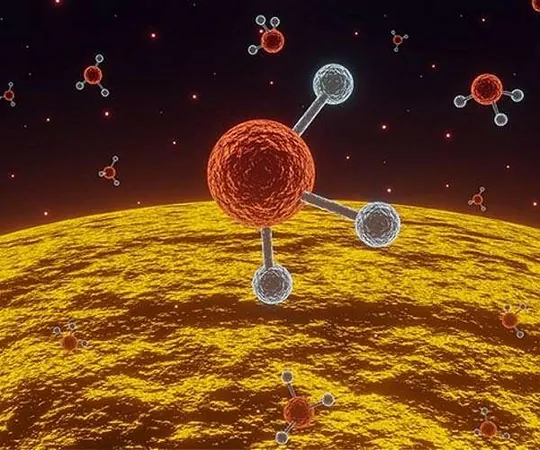
Are We Alone? UTA Physicists Narrow Down Paths to Life Beyond Earth!
2024-10-03
Groundbreaking Study by UTA Physicists
In a groundbreaking study, physicists at the University of Texas at Arlington (UTA) are shedding new light on the enigmatic question: could there be other planets capable of supporting life beyond Earth? The answer could very well be 'maybe,' especially when it comes to exploring F-type star systems, a breed of stars often overlooked yet bursting with potential.
What are F-type Stars?
F-type stars are categorized based on their surface temperatures and sit between the cooler yellow dwarfs, like our Sun, and hotter stars on the spectrum. With temperatures exceeding 10,000 degrees Fahrenheit, these fiery stars shine a bright yellow-white and are considerably more massive than the Sun. Due to their characteristics, they boast a larger habitable zone (HZ)—the region around a star where conditions might be just right for liquid water to exist on the surface of orbiting planets.
Research Insights
Under the leadership of doctoral student Shaan Patel, and alongside professors Manfred Cuntz and Nevin Weinberg, this research assessed data from the NASA Exoplanet Archive, which serves as a treasure trove of information on potential exoplanets and the stars that host them. 'F-type stars represent a high-luminosity end of the spectrum that could allow for environments conducive to life,' Dr. Cuntz conveyed. This is notable because F-type stars tend to have shorter life spans compared to our Sun; however, their broader habitable zones offer a unique opportunity for astrobiology.
Promising Candidates
After filtering through the data and discarding systems lacking sufficient planetary information, the researchers zoomed in on 206 promising candidates. Intriguingly, these were further refined into 18 systems where planets may potentially reside in the habitable zone for varying time periods. Among them is the planet HD 111998, also known as 38 Virginis, which is always positioned within its star's habitable zone. Located 108 light-years from Earth, this gas giant is significantly more massive and larger than our Sun.
The Quest for Exomoons
While this particular planet, discovered in 2016 in La Silla, Chile, may not be suitable for hosting life itself, it opens the door to the exciting possibility of habitable exomoons orbiting it—a thriving area of research that UTA is eager to pursue further.
Future Investigations
Looking ahead, Patel emphasizes that future investigations will explore the existence of Earth-like planets and habitable moons around exo-Jupiters in F-type systems. Potential avenues of research may include examining planetary orbits, analyzing the interplay between stellar evolution and planetary habitability, and assessing the prospect of exomoons in various planetary systems.
Contributions of the Global Community
'It’s essential to recognize the dedication of the global astronomical community,' noted Dr. Weinberg. 'Having discovered over 5,000 planets in the past three decades, we are now equipped to conduct statistical analyses on these relatively rare planets orbiting F-type stars and identify those residing in potentially habitable zones.'
Conclusion
As we tread deeper into the cosmos and challenge the age-old notion of Earth as the universe's only cradle of life, UTA's innovative research paves the way for thrilling discoveries that could redefine our place in the universe. Could habitable planets already lie within our reach? We’re just starting to unravel this exciting mystery! Stay tuned, as the solar system isn’t just the only neighborhood that might be buzzing with life!



 Brasil (PT)
Brasil (PT)
 Canada (EN)
Canada (EN)
 Chile (ES)
Chile (ES)
 España (ES)
España (ES)
 France (FR)
France (FR)
 Hong Kong (EN)
Hong Kong (EN)
 Italia (IT)
Italia (IT)
 日本 (JA)
日本 (JA)
 Magyarország (HU)
Magyarország (HU)
 Norge (NO)
Norge (NO)
 Polska (PL)
Polska (PL)
 Schweiz (DE)
Schweiz (DE)
 Singapore (EN)
Singapore (EN)
 Sverige (SV)
Sverige (SV)
 Suomi (FI)
Suomi (FI)
 Türkiye (TR)
Türkiye (TR)